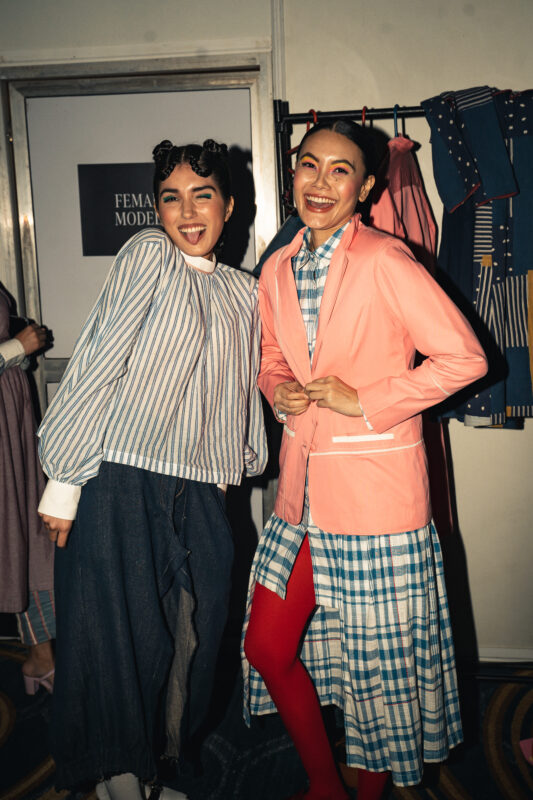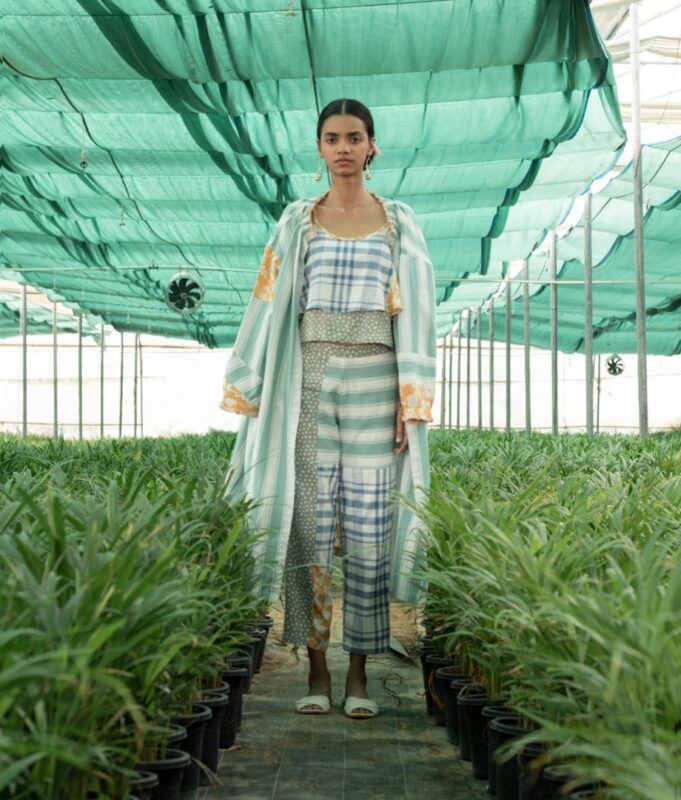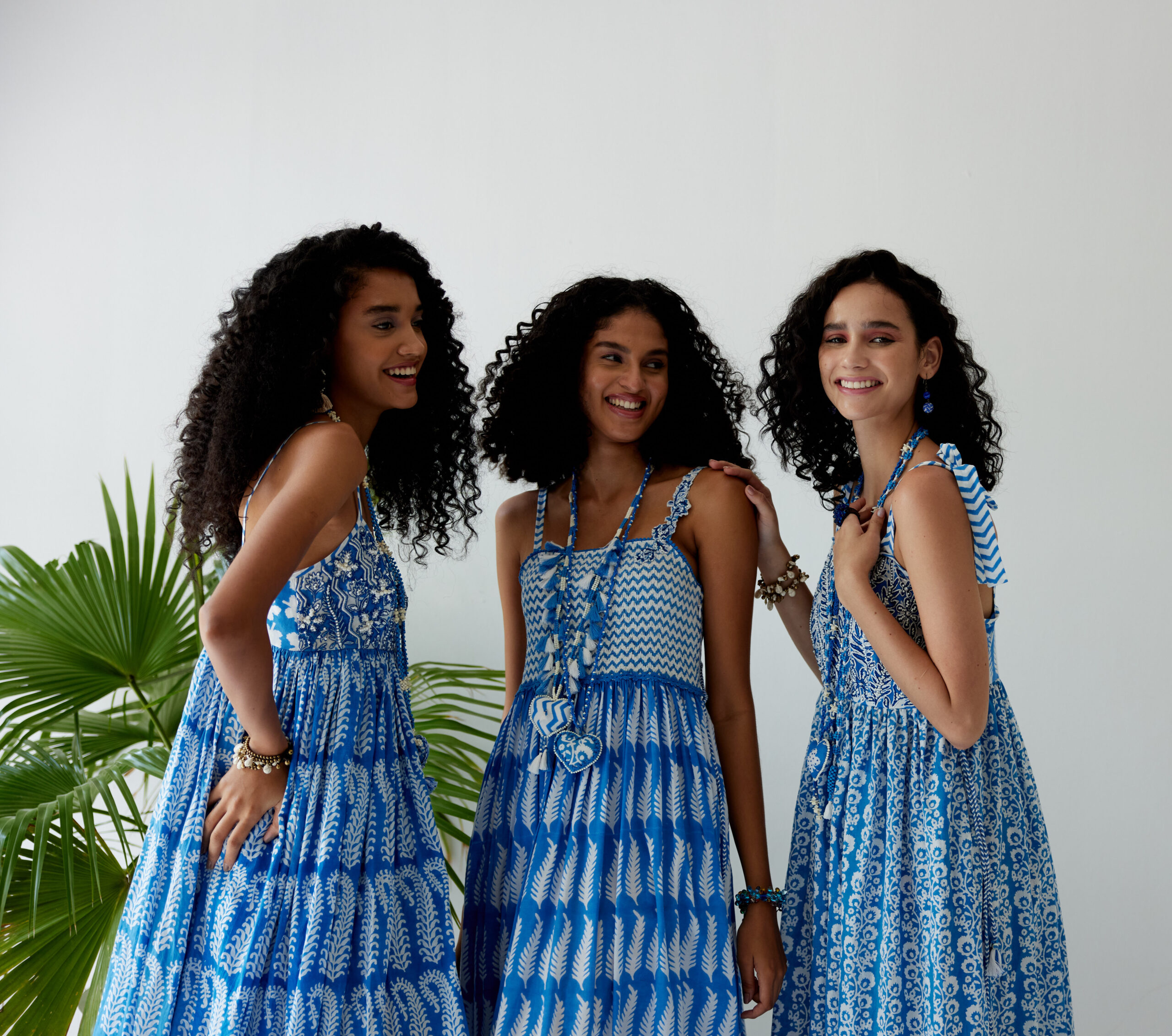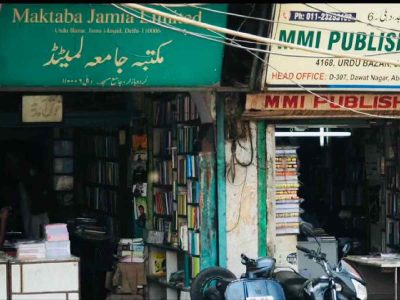Nitin Bal Chauhan is a man of few words, but when he collaborated with Graviky, he knew he was channelling sustainability in its finest form.
The idea of Air-Ink began as an experiment at Massachusetts Institute of Technology(MIT), USA, while young inventor Anirudh Sharma, who started Graviky, was designing a printer that could print with carbon nanoparticles.
The company now makes various paints out of, believe it or not, the exhaust fumes carbon. This is collected from apparatus fitted in vehicles. Anirudh has spent many years experimenting on an exhaust filter — the successful one can hold on to 95% of carbon from cars.
They have also fitted it on generators and boats — it then transforms and converts it to ink and paint.
This season Nitin, a Delhi-based artist and designer has used Air-Ink to paint with the colours they offer in his collection showcased at the FDCIXLFW (FDCI X Lakme Fashion Week) show, minus any chemical, for various types of printing.

The refillable, water resistant markers and screen-printing ink found its way on his room shirts. This was part of an initiative by Fashion For Good Museum, Amsterdam. His garments, created out of Air-Ink, were featured in the museum to be viewed by a global audience.
The fashion world is also embracing alternatives to fibres, and experiments have resulted in some made of wood, hemp, banana, bamboo. The biggest challenge, Nitin says, Anirudh faced is convincing people to put this apparatusin their vehicles to collect the carbon.
Almost one million tonnes of textiles are discarded every year in India, and it is the third largest source of municipal solid waste causing environmental concerns.
But the fashion world in Delhi is changing. Abraham and Thakore, the veteran designers, worked with recycled PET bottles, as well as recycled materials and recently told us to buy less but go for quality.
They showcased their garment from 30 years ago — when they had started — but styled it differently.
Their last season FDCI x LFW line proved you can wear their past pieces with a new twist, just like the show-stopper sari that Carol Gracias wore in the show titled “Feminine and Masculine” with a matching blouse in 2011.
Fast forward to 2023, it was styled with a sequinned, contrasting blouse updating it to a modern context.
“We wanted to show how the past, present and future can be bridged with one garment. So, buy wisely,” says designer Rakesh Thakore.
Sustainability is not restricted to fashion, but now to architecture too!
Veteran designer Payal Jain’s father DrPrem Jain, was lovingly known as ‘Father of the Green Building Movement in India’.

He started talking about green buildings and a sustainable way of life way back in the early 90s, when most people thought of green only as a colour. He practiced, promoted, taught and believed in sustainability, and knew back then that this would be the foundation of a Green Bharat, his lifelong dream.
He ushered in an ideological shift in the way buildings were designed in our country. Prem Jain Memorial Trust was created in November 2018 with this passion, love and concern for the environment, by a handful of industry veterans in the earnest hope of carrying on Dr Jain’s legacy and continue his lifelong dream of a Green Bharat, with the mission to create, establish and maintain sustainability through education, recognition and nurturing future generations.
“Two decades ago, when I first started working with craft and textile NGOs across the country, I had a burning passion for Indian textiles, which I harbour to this day. I feel blessed to have been born an Indian and can work with this endless legacy of textiles, embroideries and crafts,” says Payal.
“The brand philosophy has always been rooted in promoting the local and indigenous textiles and crafts of India. This is a small endeavour to help sustain the livelihood our artisans and craft community. In today’s scenario, when even existence is in question, it has become imperative to promote our own artisans, weavers, crafts, and textiles,” she adds.
“If we do not do this with intention and commitment, we run the risk of their incredible heritage and legacy vanishing off the planet and our children never having the opportunity to experience their richness. Indian textile and fashion industry collectively employs billions of Indians and it has now become imperative to look after their well-being, safety, and health. I feel there is dire need for a basic certification process, possibly initiated by the government with a handful of experts, to help our industry implement and follow safety, health, and sustainable concerns,” says Payal further.
In terms of the Indian fashion, there is an inevitable shift towards more meaningful, ethical, indigenous and timeless fashion. The ‘back to roots’ phenomenon has been gathering steamslowly. It has become clear that our strength lies in our vast heritage of textiles, embroideries, and crafts, not aping the west or using imported fabrics.
“We must support our own karigaars, weavers and craft people to build a strong eco-system in the industry. Use of natural yarns, organic textiles, natural dyes, recyclable trims, and accessories mustbe a conscious choice of the design community, driving change in the way the consumer thinks about fashion,” says Payal.
“As an industry, we can make changes in our production facilities, reduce wastage of water, conserve power and try alternate sources of energy, recycle and up-cycle our products, ban use of plastic, stop wastage of paper, create safe and hygienic working environments, and focus on health and sanitation for our work force,” she explains further.
For the talented Delhi-based style guru known for her upcyling and recycled line Doodlage, the biggest challenge is identifying production houses, sourcing waste mill-made materials, mending defects, beforeshe begins work on the mood-board, theme and ensembles.
All her garments are ethically produced, and this season she showcased a line made from recycled handlooms — econyl, tencel, polyester.
“I worked with handlooms as well as denims, both recycled in my line ‘Nostalgia’ which is armed with flower prints,” she says.
Living on a planet with limited and increasingly exhausting resources it is essential to move towards circularity and finding value in waste.
“We have grown to approach sustainability more holistically. Material for each product is chosen consciously. We work with deadstock, defected and post-cutting waste remanufacturing with what has already been produced, use recycled material or low impact new age material. We work with NGOs, fair wage factories and for-profit social enterprises for production of our products. The last layer of the product, that is packaging, is also made with starch or recycled paper,” she adds.
Working sustainably is a journey. Infrastructure to be 100% sustainable does not exist and whatever exists is not the most cost effective. The best way is to effectively incorporate sustainable solutions in your business and keep using profits to do more, she reiterates.
Another important player is designer Pratyush Kumar, whose label Pieux also uses circular fashion, from plastic bottles, cotton, carpet waste to craft bags, footwear, and garments.
And here is the show-stopper of the line — repair the parts of the eye-wear, and create a new look altogether. He gives you options to alter the colour and style, as well as printed 3D options, and this is not all. In the footwear, the soles can be replaced from the upper part of the sneakers, giving you a reason not to discard but renew.
There is a great need to create love, appreciation, and patronage of the vast textile heritage. It has been the sincere endeavoursof these gurus to consciously work on nurturing, reviving, and reinterpreting traditional Indian crafts and textiles, and to find global markets and eco systems to sustain these in humble ways.





